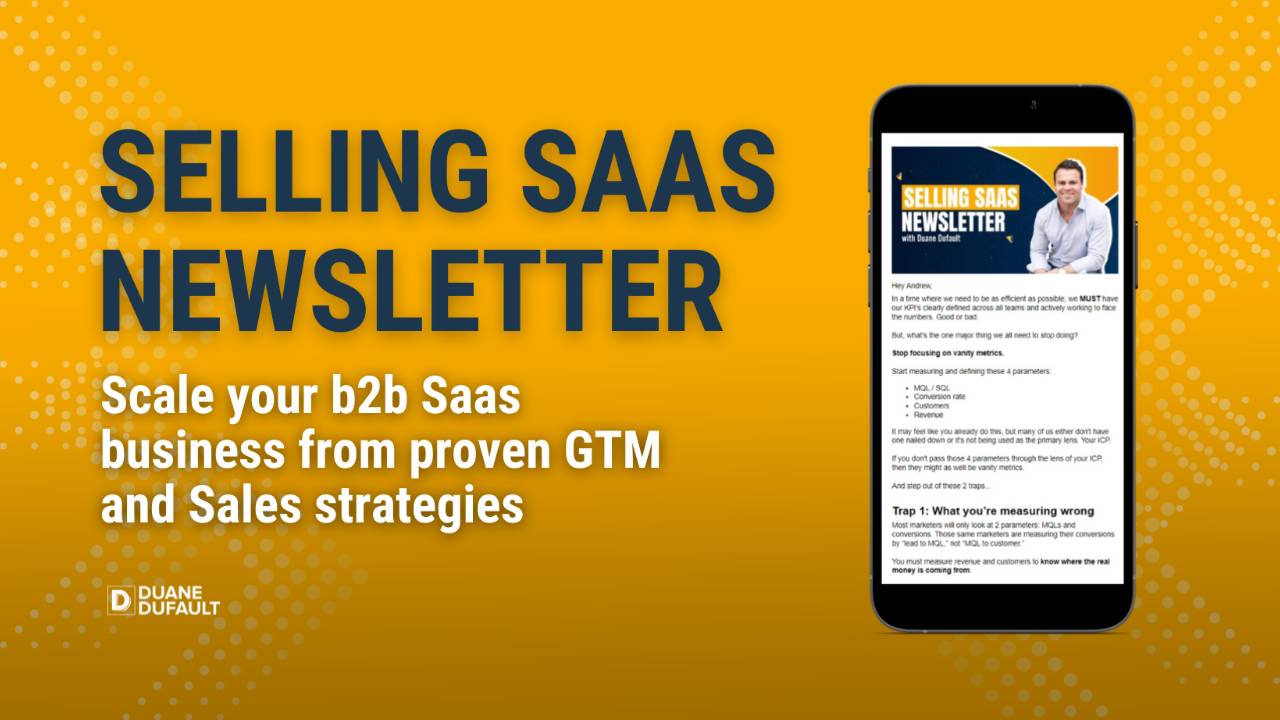The lead came from somewhere: GTM Strategy
Jul 06, 2023
Not sure what Go-to-Market or GTM Strategy means? Hop to the end of this blog for a glossary.
Let's get into the meat of what sales and product-led growth teams do well, and what sucks, when they're building a growth strategy. I've seen dozens over the last 15 years and here's the hard truth that everyone needs to understand: There are only 3 GTM strategy models.
3 types of GTM strategy
1) Sales-led
2) Marketing-led
3) Product-led
If you pressed me, I could argue there are only 2.
I know the argument can be made for others like community-led, channel, and account-based but the fact of the matter is that they’re all a variation of the 3 or just operating within the same framework.

GTM strategies that founders love
Let’s break down a GTM strategy that’s been gaining traction this year: Community-led. Whether there's a strong business case for it or not, founders love to say their business is community-driven.
Now, it's different to say "we're community-led" in a press statement, to truly embody it. I could get behind the first! To understand why it rarely works, let's look into what happens though when most startups, especially SaaS startups, go the community-led growth route:
-
A startup creates a community and invites prospects to join it, free of charge.
-
The founders share specific educational content only in that community, to add real value (good on them!)
-
Then, they sell into that community:
-
A person reaches out to the community based on their involvement.
-
Or, a prospect chooses to take action on their own by signing up for a tool, downloads something, starts a trial, or books time.
-
On the surface, this looks like it’s community driven. But it’s not.
The community is simply acting as the modern lead magnet. It's the same as signing up for a trial with a SaaS startup, a download from an editorial, or an on-demand video. It’s just a different way to “own” your traffic.
This is similar to when companies push you to sign up for their email newsletter. They want that because it means they control delivery of content. This is what I'm talking about when I say GTM strategies that founders love. That doesn't mean they work.
Lastly, communities are a form of digital networking circles. Join the group, do your rounds, attend events, and eventually you'll do business with someone. So for these reasons, the term “community-led growth” is not interchangeable with the core three: sales, marketing, or product-led growth.

Nail down your own GTM strategy
Reiterating the important part, any SaaS startup can distil GTM down to sales or marketing.
Here are 2 questions you need ask yourself to get there:
- Did they click an ad to get into the community?
- Was it a referral was it an affiliate sharing some cool work they’ve done in the community?
- Or, did an existing member send them an invite link?
- This is where things get polarizing. If a sales rep worked the lead and closed the deal, wouldn’t it be sales-led? It doesn’t matter where it came from at that point.
- Even in product-led growth strategies, the leads come from somewhere, and then the product finished the deal.
We can all lean into pomp and circumstance about our company being modern and innovative, but it will always come down to 2 determinants:
Can you market and can you sell. Everything else is figuring out where you convert the most for the least $.

So, what does an excellent GTM Strategy look like?
GTM strategy best practices
When the GTM strategy meaning is literally a plan to effectively engage with customers and get them to buy your product, there's not enough nuance to understand why you should put weeks, if not months of thought into this.
For me, a great GTM strategy means knowing how to communicate your unique value to the ideal prospects.
GTM strategy example
In my opinion, SaaS startups should:
1. Decide on a great sales-led, or sales and product-led, growth strategy.
2. Elect a pricing model that suits their ideal customer profile.
3. Then define the best paid or organic channels for distributing and marketing their product.
My one take-away, that I'd like you to go away from this article with? Decide your strategy based on boots-on-the-ground research — not your assumptions or current clients.
You can find examples of companies that have done this perfectly on the SellingSaaS podcast. Drop me a line if you want pointing toward a specific episode for your needs, always happy to support startup founders and sales leaders.
Let us slide in your DMs...
Drop your email and we'll send you the SellingSaas Newsletter, a weekly digest of industry leading updates, insights and tactics for B2B tech companies.
We HATE spam. We will never sell your information, for any reason.


